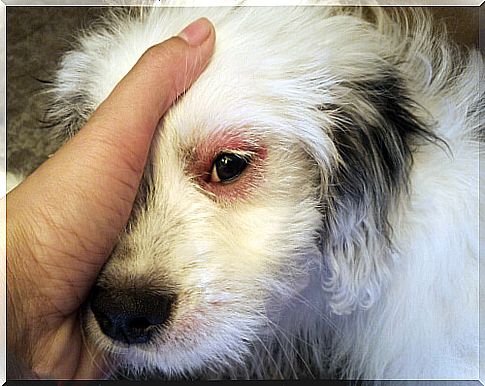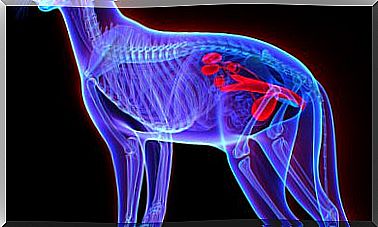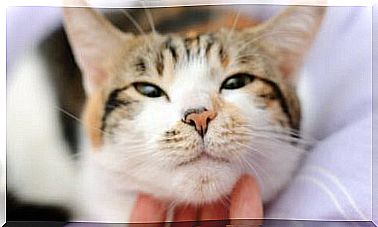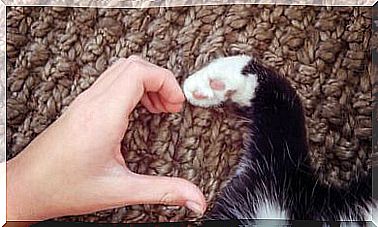Eye Infections In Dogs

Eye infections in dogs can be caused by a multitude of organisms. In addition, they can derive from other systemic diseases with ocular affection.
The eye is a very complex and sensitive organ that can easily be damaged by small changes inside or outside the body. The eye health of our pet must be maintained through daily cleaning with specific products or saline, as well as by removing the legañas that occur throughout the day.
In this article we will talk about eye infections in dogs, some more common than others, but all equally important. Before any change in the appearance of our dog’s eyes, we must go to the vet as soon as possible.

Ocular Toxocariasis
Toxocariasis is a parasitic infection produced by the nematode Toxocara canis in dogs and humans, so we are dealing with a zoonotic disease.
A dog becomes infected with toxacaris by eating meat or food infected with the eggs of this parasite. The eggs, upon reaching the intestine, pass through the wall and reach the liver through the blood.
However, sometimes they can overcome the barrier of the liver and reach the brain – where it causes meningitis – or the eyes. Here, a single larva can develop and destroy various structures in the eyeball, leading to granulomas and chronic endophthalmitis, which is the inflammation of the tissues inside the eye.
Conjunctivitis from eye infections in dogs
Conjunctivitis is one of the most common problems in veterinary clinics. In most cases they are caused by eye infections in dogs. These infections can be viral, bacterial or even due to an allergic reaction.
The conjunctiva is a very thin, translucent layer that lines the eye and the inside of the eyelids. Due to its characteristics, this fabric is not visible unless a problem appears. The most common symptoms of conjunctivitis are:
- The sclera or white part of the eyeball becomes red due to increased blood supply.
- There is excessive tearing.
- Many legañas of a greenish color can appear .
- The dog may not open his eye. This is due to the pain it produces.
- The eyelids appear inflamed, which is known as blepharitis.
- The eye increases its sensitivity, so the light bothers it excessively.

Canine immune-mediated conjunctivitis
Occasionally, conjunctivitis can be immune-mediated and race-related. The most affected breeds include the German Shepherd, the Long-Haired Dachshund, and the Miniature Poodle.
In these types of dogs, an infiltration of plasma cells can occur through the nictitating membrane or third eyelid, causing blepharitis.
Canine ehrlichiosis
Canine ehrlichiosis is a disease caused by the bacteria Ehrlichia canis , which can be transmitted by infected ticks. This pathology can be fatal because it mainly affects the blood, its components and the immune system. The main symptoms observed in the laboratory tests are anemia and leukopenia or a reduction in white blood cells.
In most dogs, eye and eyelid inflammation occurs during the onset and subsequent development of the disease. Finally, the disease affects other regions of the eye, such as the retina, which causes pain and seriously affects vision.
Eye worms
Canine telaziosis is caused by the worm Thelazia callipaeda. This parasite is native to Asia, but has already reached different regions of Europe.
Both the adult form of these parasites and the larval form live in the eyeballs of domestic carnivores – cats and dogs – and wild carnivores. They are transmitted by arthropods.
The presence of these worms in the eyes of animals can cause different degrees of damage:
- Excessive tearing
- Conjunctivitis.
- Ocular keratitis
- Epiphora or obstruction of the tear ducts.
- Edema, inflation or excess fluid in the eyelids.
- Corneal ulcers.
- Blindness.









